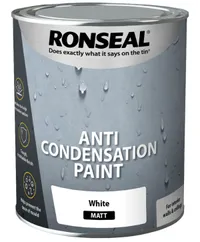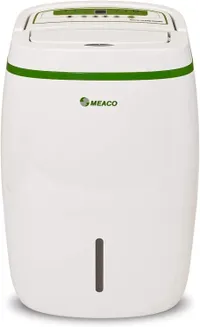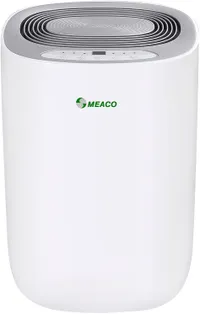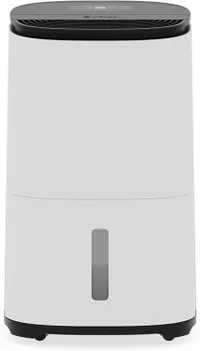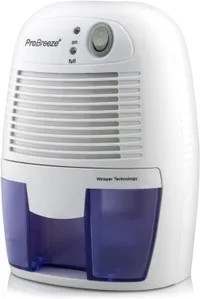How to stop condensation on windows – 8 tips and the expert-recommended solutions to stop windows steaming up
Find out why they steam up and how to stop condensation on windows, with top tips from the experts

Daniella Gray
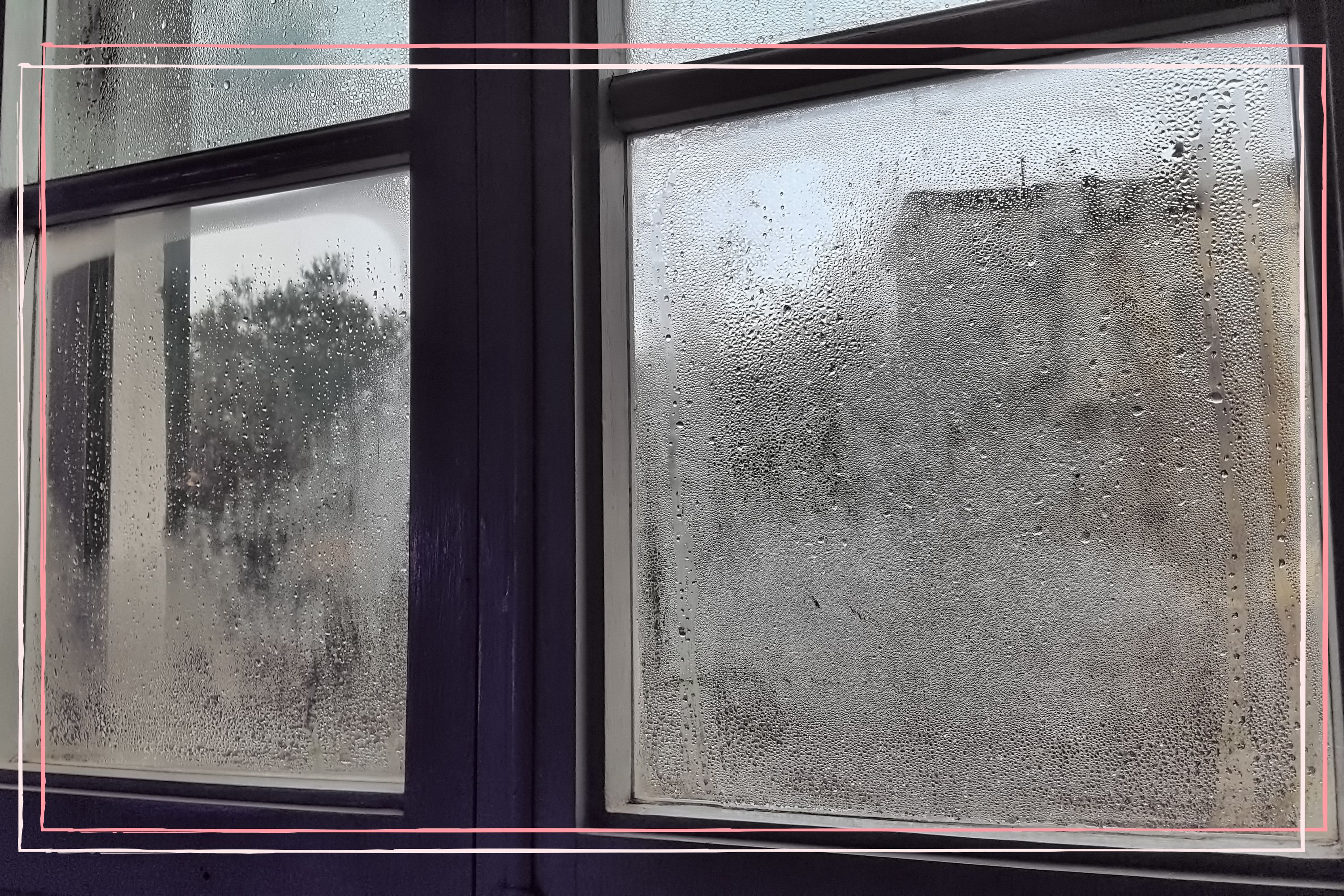
Sometimes there’s just no getting away from the topic of weather – and how it affects our daily lives. It only seems like yesterday that we were scouring the internet for the best ways to sleep during a heatwave, but now that digging out your trusty trench coat has probably solved the mystery of when does autumn start, you might be wondering how to stop condensation on windows.
And while it might not be your number one priority, Nigel Dawson, senior designer at More Kitchens explains why it’s a good idea to deploy a strategy for the benefit of your health.
8 tips on how to stop condensation on windows
1. Open windows
Unlike in the summer when you open windows to ventilate a room, it’s probably going to be too cold to do that in winter. However, it's good to open a window to let fresh air in when you can, even if only for a short while.
“If your home is suffering from condensation, damp or mould, the best thing you can do is to try and improve the ventilation inside,” advises Adam Pawson, Head of Digital at window supplier Safe Style.
“Try to regularly open windows to allow air to move freely and let moist air escape from the property.”
How do you know if you have condensation issues? Look out for:🪟 Steamy windows💦 Damp walls🏡 Peeling wallpaper⚫️ Black spots of mould on walls👃 A musty smell Read our #ventilation guide to see what causes #condensation & how to control it: https://t.co/TiUgXL4cbe pic.twitter.com/zwqQZ4QoPtJanuary 7, 2023
Simply having the window open allows air to flow outside, rather than settling in and around your house, says Nigel.
Nigel adds: “Likewise, the door of any room using hot water – like a bathroom – should always be closed to stop steamy air from flowing throughout the home.”
Parenting advice, hot topics, best buys and family finance tips delivered straight to your inbox.
2. Use a fan when cooking or showering
Use your bathroom and kitchen extractor fans every time you cook or shower, as both release a lot of moisture into the air. Nigel advises to only do this for 15-20 minutes at a time though – and don’t do it overnight.
“Fans are now an installation requirement in newly built homes to extract old air and expel it out of the home,” he says.
“Older homes do not always come with an extractor fan, but if the room has a window, it isn't essential to have one installed. However, if the room in question doesn’t have a window, a ventilation system should be installed to comply with building regulations.”
3. Adjust your heating
Sudden increases and decreases in temperature can cause condensation on windows, so boiler cover company Hometree suggests keeping your heating on a constant low heat to balance out the air temperature and prevent the frequent switch between hot and cold.
It’s worth bearing in mind, however, that with energy bills increasing, this is a more costly option for getting rid of condensation on windows compared to other solutions, so if you're looking to learn how to save money it may be better to try another one of our tips on how to stop condensation on windows.
4. Hang your washing in well ventilated areas
“Reducing how much moisture is in the air can have a huge impact on tackling condensation dampness,” Adam states.
“Little changes such as having your tumble dryer vented outside and hanging washing in airy spaces, instead of drying it inside warm rooms, can really help to keep the mould at bay.”

However, with the current cost of living crisis not everyone can afford to run a tumble dryer and more people are putting wet washing around their home to dry. Chris Michael, Managing Director of air purification specialists Meaco, advises placing wet items away from walls to prevent the moisture from being trapped, and hanging items individually and with as much space in between them as possible so they will dry more quickly.
“Before you take them out of the washing machine, use a rinse cycle to keep the amount of water left in the clothes to a minimum,” he adds.
5. Make sure your home is well insulated
“If you’re heating and ventilating your home properly and still experiencing things like mould, damp or bad allergies, there may be other factors at play,” says Stephen Hankinson, Managing Director at Electric Radiators Direct, the UK’s leading supplier of energy efficient electric radiators.
“Insulation keeps moisture out of your home by sealing it from the outside. It eliminates cold surfaces where condensation can form, keeping your home warmer and dryer.
“If your home is poorly insulated, then too much moisture may be entering your home – and heating and ventilating may only do so much.”
According to Stephen, there are several ways to recognise if your home needs better insulation. For example, a good indicator is if your home gets cold immediately after you turn off the heating, as this probably means the heat is escaping too quickly.
“If you notice your top floor is extremely draughty, then you might benefit from loft insulation. If the colder rooms in your home are outward facing, then you may want to look into wall insulation,” Stephen recommends.
Faulty seals on window and door frames can also allow too much outside moisture in. Draught excluder tape for windows or fabric draught excluders for the bottoms of your doors may help, he adds.
Adam agrees – the key to preventing condensation is making sure your house is well insulated. Although it is a big investment, insulation may be worth it if you are worried about black mould.
“Double glazing, wall insulation and draught-proofing will help to reduce the amount of heat that is lost from your home,” says Adam.
“Having well installed, energy-efficient windows will help to keep your property's temperature high, which can have a massive impact on condensation and mould growth.”
6. Try anti-condensation paint
Frantically searching what can I put on my windows to stop condensation? Damp-proofing specialists at Permagard explain that anti-condensation paint is able to prevent moisture from forming on surfaces, and are usually designed to repel water as well as provide some thermal insulation.
It does this by raising the surface temperature of the internal walls with a number of tiny hollow glass beads that reflect thermal energy away from the walls.
They add: "By effectively repelling warm air back into the room, the paint prevents moisture from forming on the walls and causing damp issues and mould growth."
You can buy anti-condensation paint on Permagard's website as well as at home improvement stores.
Ronseal Anti Condensation White Matt Damp seal paint, 2.5L
Ronseal Anti Condensation Paint adds an extra layer of insulation to your wall and puts a stop to condensation building up and mould growing. It can be used either as a topcoat, or you can paint another colour over it. Its tough, scrubbable finish is moisture resistant and helps to prevent the causes of mould.
7. Try one of these viral hacks
Whenever you need help with a problem, chances are you’re probably turning to social media for some advice.
As temperatures can drop dramatically in the depths of winter, many are quick to share their tried-and-tested home remedies to stop condensation on windows over the internet.
There are two hacks in particular that have seen praise, and both include household items that are both cheap and probably already have in the cupboard: washing up liquid and salt.
‘Queen of Clean’ and This Morning's very own homecare expert Lynsey Crombie shared the first hack via her TikTok.
In the caption, Lynsey explains: “To prevent condensation on your windows this time of year just simply rub a tiny drop of neat washing up liquid using a dry cloth all over the affected windows.”
She added: “This will stop the condensation leaving you with dry windows in the morning.”
Another hack involves putting a small bowl of salt on the windowsill to draw in the damp, and was recommended by fans of home cleaning influencer Mrs Hinch via the Mrs Hinch Cleaning Tips Facebook page.
This works because salt has absorption properties and therefore can draw in moisture from the air, meaning there will be much less condensation on your windows.
8. Buy a dehumidifier
One of the most effective ways to prevent condensation on windows is by using a dehumidifier. By taking moisture out of the air in your home, they reduce condensation and are often also able to relieve allergy symptoms and make breathing easier.
“Look for dehumidifiers that have a dedicated laundry mode where the machine runs up to six hours before switching itself off to save energy,” Meaco’s Chris advises.
“For further energy savings, look for models which use a humidistat, which means the dehumidifier switches itself off when the target humidity is reached, only switching on again if it detects an increase in humidity.”
However, some humidifiers can be quite noisy or really dry out a room, so you might want to consider that before purchasing one. If you're worried about cost, you might be interested in our article on how much do dehumidifiers cost to run. You can also check out some of the best Black Friday dehumidifier deals to save money on these handy devices.
What causes condensation on windows?
“The air surrounding us in our homes is filled with water vapour, and the warmer the air is, the more vapour it contains,” explains Dave Palmer technical officer at MyGlazing.com, the Glass & Glazing Federation (GGF) advice website.
Condensation occurs when hot and humid air comes into contact with a cold surface, like a window. When this warm, moist air meets the cold surface, the moisture in it condenses.
“When it comes to windows and doors, condensation occurs when there is a difference in temperature between internal and external environments, such as when warm air hits a cold window,” he continues.
“As temperatures drop outside, many homeowners will be putting on their heating. This means the air within the home is going to be warmer than that outside, so when the air from outside touches the window – which can be warmer than the air – condensation occurs.
Why am I getting condensation on my windows?
As we get into the depths of winter, many homeowners will see condensation on the outside of their windows, but this doesn’t necessarily mean the windows are faulty, says Dave.
“Condensation, especially on the outside of the window, is most common on single glazed windows as the outside air is going to come into direct contact with the warm window.
“Windows which are double or triple glazed have multiple panes of glass, so the cold air from outside shouldn’t come into direct contact with the warmest window pane, however the external pane of glass is still likely to be warmer than the air outside, so condensation may still occur.”
Why do my windows have condensation on the outside?
Condensation forms on the outside of windows in the same way. So, for condensation to form on the outside, the temperature of the glass must be colder than the dew point outside.
You don't need to worry about condensation forming on the outside of windows, because it usually means the window is working well at preventing heat loss from your home - usually because they are double or even triple glazed.
Is condensation on windows bad for health?
Condensation is fine in small amounts, but it can become a problem if it is left to build up for a while. This is because it could result in black mould.
In any home, condensation is almost unavoidable, states mould expert at Dryzone, Dr Jonathan Kirby.
Daily activities around the house, including cooking, drying clothes and even breathing, causes condensation, making it one of the most common damp problems, he says.
“However, condensation can lead to concerning health problems for occupiers.
“The residual moisture can become a breeding ground for fungal spores which can lead to mould. If left untreated, mould can cause serious problems like skin rashes and respiratory issues.”
#Condensation is especially common in winter & can encourage #mould growth in your home - which worsens #IAQ & negatively impacts health🏠Read our new infographic below to learn more about the health impacts of mould & condensation, and the key ventilation solutions available: pic.twitter.com/OUQph80OW5November 17, 2021
Dr Kirby says that while it is dangerous for anyone to live in a damp environment, vulnerable occupants such as the elderly, babies or those with asthma are most at risk.
“If mould has already built up around your window frame, it’s important that you take action to remove it in order to avoid any health risks,” warns Adam.
“Wearing protective gloves, use a household black mould remover and a non-abrasive brush to go over the affected area. Leave the solution for up to 15 minutes to allow it to break down the bacteria and then go over the area with a damp cloth and repeat the process until the mould is completely removed, before wiping over with a clean cloth. We’d recommend keeping the window open until the area is completely dry.”
Should I wipe condensation from windows?
Wiping down windows is a good way to prevent a build up of condensation. If mould has developed, the NHS recommends that you wipe it away with a cloth soaked with soapy water.
You should use a dry cloth to remove any moisture, and throw both cloths away after using to prevent contamination.
Adam agrees with this advice: “If you do start to see water beads appearing on or around your windows when the temperature outside begins to drop, make sure that you’re clearing the area on a daily basis. We’d suggest using a microfiber cloth to remove any dampness, before applying any cleaning solution.”
Saving money this winter will be a priority for many people living in the UK, and paying for mould and mildew removal services might be out of the question for some.
Instead of forking out thousands of pounds on a professional, cleaning experts at PureSalt, the UK’s most reliable salt supplier, have a simple solution for tackling condensation at home.
“Damp and mould are two of the most prevalent issues in our homes, affecting 20 percent of all properties in the UK,” says Julian Hobday, a spokesperson for the company.
If left untreated, these unsightly spores can develop into mildew, which is a form of fungus that can trigger allergy symptoms, he warns.
“Baking soda and white vinegar are common budget-friendly solutions for household cleaning, but for certain cleaning tasks, salt is a much more effective option.
“Costing just 65p for a 750g container, table salt is one of the cheapest and safest cleaning remedies available. Notably, it could save homeowners as much as £2,200 that they would otherwise spend on professional mould and mildew removal services.”
How do you get rid of mildew fast?
A simple solution for addressing condensation involves placing 100g of salt in a bowl on your windowsill to absorb the excess moisture. Julian says mildew can be specifically addressed using a mixture of lemon juice and salt with the following steps:
- Combine one cup of warm water, ¼ cup of lemon juice, and one tablespoon of salt in a spray bottle. Shake the solution until it's thoroughly mixed.
- Directly spray the areas affected by mildew or mould, ensuring full coverage.
- Allow the solution to sit for a minimum of two to three hours to enable effective penetration of the mildew.
- After waiting, wipe away the mildew with a clean cloth, making sure to frequently clean the cloth between wipes to prevent the unintentional spread of mildew.
- Repeat as necessary.
“To prevent the development of mould and mildew in the first place, consider spraying the solution in areas where these issues are most prevalent, including shower walls, bathrooms, and basements,” he suggests.
The best dehumidifiers to stop condensation on windows:
1. Meaco 20L Low Energy Dehumidifier & Air Purifier - View at Meaco | John Lewis | Amazon
RRP: £259.99 | Dimensions: H59.5 x W38.5 x D29 cm | Weight: 12.6kg
If you live in a three to five bedroom house and suffer from condensation, mould or damp then this model will deliver excellent results. The Meaco system runs the dehumidifier to your chosen target relative humidity, and once the humidity has stabilised it goes into sleep mode, waking every 30 minutes to test the air until it has to start dehumidifying again. There’s a whole bunch of useful features too, like a motorised rotating louvre to help dry washing faster, a large front loading water tank, two fan speeds, an off timer, a digital display to show you the room humidity, a variable humidistat and a child lock. It comes with a strong carry handle and large castors to make it easy to move the dehumidifier when you want to dry laundry or dry the kitchen or bathroom.
- View Meaco 20L Low Energy Dehumidifier & Air Purifier | £259.99 - Available at Meaco | John Lewis | Amazon
2. MeacoDry ABC Dehumidifier, 10L - Available at Meaco | John Lewis | Amazon
RRP: £129.99 | Dimensions: H46 x W29.5 x D25.1 cm | Weight: 11.3kg
This dehumidifier is Meaco’s quietest, and as well as being energy efficient it features laundry drying, a child lock, an off timer, and auto stop when the tank is full of water. The low power consumption makes it a low cost way to get rid of that pesky condensation or dry your laundry, and it’s easy to use with simple controls and a display showing current room relative humidity and options to set a chosen humidity level. The child lock prevents the settings from being tampered with.
- View MeacoDry ABC Dehumidifier, 10L | £129.99 - Available at Meaco | John Lewis | Amazon
3. Meaco Arete Dehumidifier & Air Purifier, 20L - Available at John Lewis | Argos | Amazon
RRP: £259.99 | Dimensions: H56.2 x W37.6 x D23.2 cm | Weight: 15kg
Another quiet one, this dehumidifier boasts being more than twice as quiet as the industry standard. The appliance has been specifically optimised for the British climate, and dehumidifies most efficiently between 10°C and 20°C, to extract the maximum amount of water from the air, when you need it most. Standard dehumidifiers are created to work most efficiently at 27°C, way above the average temperature of a British household. The medical grade H13 HEPA filter helps to clean the air in your home, removing smells and physical particles, making it a great option for people with allergies too.
- View Meaco Arete Dehumidifier & Air Purifier, 20L | £259.99 - Available at John Lewis | Argos | Amazon
4. Pro Breeze Dehumidifier 500ml Compact and Portable Mini - Available at Pro Breeze | Amazon | OnBuy
RRP: £34.99 | Dimensions: H22 x W13 x D15.6 cm | Weight: 1.04kg
If you’re after something a bit smaller and more lightweight, this is definitely the one to go for. Great for removing moisture from smaller spaces and easily moving around your home, the Pro Breeze dehumidifier uses Thermo-Electric Peltier Technology to allow for whisper quiet eco-friendly operation, and has an auto shut-off option for when the tank is full. Another good option for allergy sufferers, this appliance helps to improve air quality by removing mould spores and dust mites, which are common triggers for those with respiratory problems.
- View Pro Breeze Dehumidifier 500ml Compact and Portable Mini | £34.99 - Available at Pro Breeze | Amazon | OnBuy
5. DeLonghi Tasciugo AriaDry Multi 12L Dehumidifier - Available at DeLonghi | Amazon | Appliances Direct
RRP: £254.99 | Dimensions: H50.8 x W33.4 x D22 cm | Weight: 9kg
This one may be more pricey, but it’s capable of removing up to 12 litres of excess moisture in 24 hours to keep your windows condensation free. The integrated handles mean it can easily be moved between rooms, and the double filtration filter improves overall air quality thanks to a dust filter and removable allergen filter. The transparent tank means the dehumidifiers performance and water level can easily be checked at any time.
- View DeLonghi Tasciugo AriaDry Multi 12L Dehumidifier | £254.99 - Available at DeLonghi | Amazon | Appliances Direct
Thinking about making some interior improvements? Read how to spruce up your home on a budget here. And, if a move is on the cards for you this year, you might be wondering are house prices falling? Find out here.

Nigel is a fully qualified Gas & Central Heating Engineer and works directly with the MoreBathrooms and MoreAbility brands, surveying & designing bathroom works and solutions for the domestic home owner.
Nigel is also responsible for the Barnsley and Doncaster conurbation with regards to the public sector MoreAbility work, managing relationships with the local council to deliver bespoke bathroom solutions for the elderly & disabled customer.

Chris Michael is the co-founder and managing director of air purifying specialists Meaco. He started the business in 1991 with the aim of specialising in monitoring and control equipment for museums and art galleries. In 1992, Meaco developed the world's first radio based environmental monitoring system in conjunction with the Victoria and Albert Museum in London, before making the decision to concentrate on domestic dehumidifiers in 2005. Meaco is now regarded internationally as a major player in the industry selling to 20+ countries throughout Europe, North America and South Africa, and its products have won awards from Which?, Good Housekeeping, QuietMark and Stiftung Warentest.

Ellie is GoodtoKnow’s Family News Editor and covers all the latest trends in the parenting world - from relationship advice and baby names to wellbeing and self-care ideas for busy mums. Ellie is also an NCTJ-qualified journalist and has a distinction in MA Magazine Journalism from Nottingham Trent University and a first-class degree in Journalism from Cardiff University. Previously, Ellie has worked with BBC Good Food, The Big Issue, and the Nottingham Post, as well as freelancing as an arts and entertainment writer alongside her studies. When she’s not got her nose in a book, you’ll probably find Ellie jogging around her local park, indulging in an insta-worthy restaurant, or watching Netflix’s newest true crime documentary.
- Daniella GrayFamily News & Wellbeing Writer
